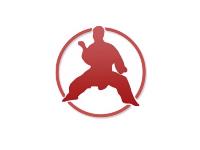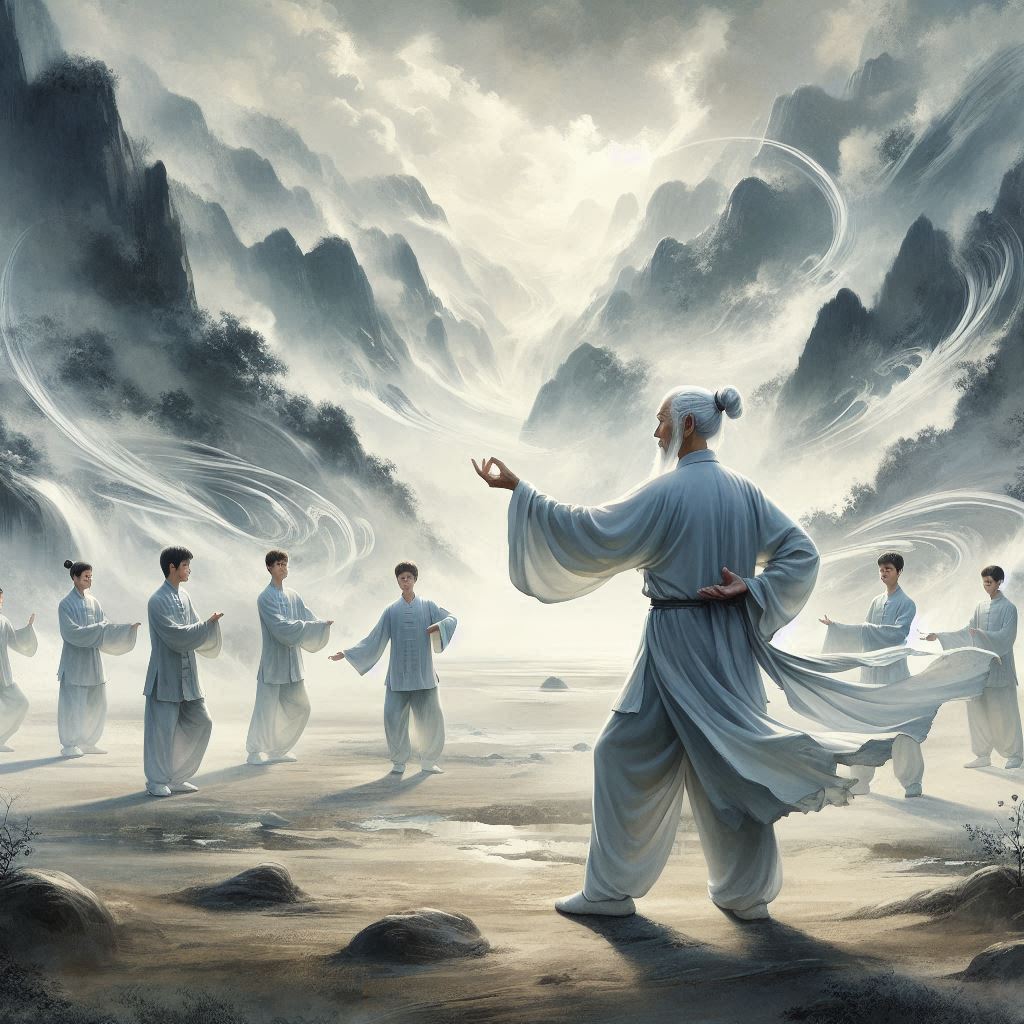
|
I extend my sincere gratitude to the Ottawa group for organizing such a well-run and rewarding workshop. Throughout the event, we had the opportunity to practice Yilu and foundational exercises, deepening our understanding and skills. A crucial aspect of the workshop was exploring the theory and philosophy of Chen Taijiquan. Master Chen shared numerous insightful concepts, but I’d like to highlight two key ideas: ‘Connecting Pairs’ and ‘Clear.’ |
Connecting Pairs
|
Pair Matching, or Connecting Pairs, is a fundamental concept in the Practical Method. This principle can be understood by applying it to a line—every line inherently contains a pair because each end represents the opposing forces of Yin and Yang.
In Taiji training, it is essential to establish these matching pairs between body parts, following the guiding phrase: “Yin and Yang must be equally split.” However, applying this concept can be challenging. Our natural instinct is to move freely, reactively. |
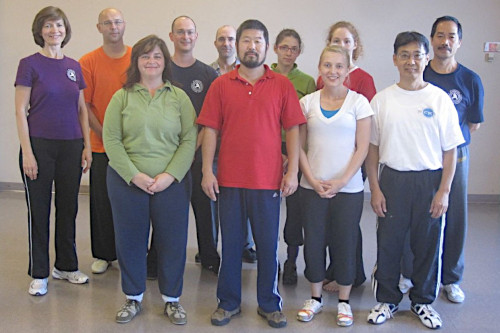 |
Mentally, we struggle to accept the principle because such controlled
movements feel unnatural. The body resists, seeking spontaneous motion,
which disrupts the integrity of the connecting pairs.
- Connecting the elbow to the hand
- Connecting the Dantian to the Mingmen
- Pushing against a wall
These exercises help develop an understanding of stability within movement while preserving the balance of Yin and Yang.
1. Connecting the elbow to the hand
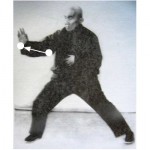 |
In drawing the positive circle, link the elbow to the hand. This is accomplished by stretching the hand and not moving the elbow during one move of the positive circle. An example of this stretch is illustrated by the picture of Grandmaster Hong. The elbow is stationary but the hand reaches out. The movement is probably very small but the importance is the intention or aim of the finger. |
2. Connecting the Dantain to the Mingmen
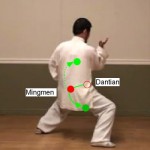 |
A key connection in this practice is between the Dantian (丹田) and the Mingmen (名门, GV4)—two significant meridian points in traditional Chinese medicine. This exercise is performed by engaging both points simultaneously, achieved by drawing in the stomach and tilting the tailbone. Once you can sense this connection, you can progress by incorporating a Yin-Yang separation centered around this pair. This separation is facilitated by lifting the head while allowing the lower body to settle. A demonstration of this exercise can be seen in the picture of Master Chen. |
3. Push against a wall
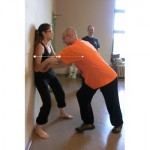 |
Practical method training progresses from the real to the unreal. Beginners must first learn to connect two physical points before attempting to link imagined ones. The wall exercise is designed to develop this understanding. In the image, your friend (in orange) pushes and pins you (in black) against the wall. To counter this, you must identify a point on the wall and connect it with your hand to move your opponent away. The wall serves as a real restriction, helping you establish this connection pair. This exercise has direct applications in push hands—you visualize an imaginary wall, locate a point on it, and connect with your hand to redirect your opponent. |
Clear
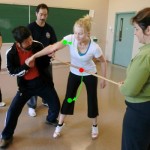 |
‘Clear’ is a concept rooted in the philosophy of Yin-Yang Separation. Its significance is highlighted by both Grandmaster Hong and Chen Xin in the phrase: ‘The elements of surprise reside in the turning of the joints.’ (得势争来脉, 出奇在转关。) Master Chen demonstrates this idea through a practical exercise.
A fixed bar is used to establish a boundary beyond which the body (in white) cannot move. The point of contact between the body and the bar forms a crucial reference point. As your opponent (in black) attempts to pull you closer, there comes a limit to how near the body can move toward the bar. At that precise moment, by yielding the top and bottom—for instance, by stretching over the point—your opponent will lose balance and fall into emptiness. This exercise offers a practical illustration of the concept of ‘turning of the joints.’ |
This pivotal point in movement can be understood as an inflection point in mathematics or a critical phenomena in physics.
Musings
The Mandarin Duck (yuān yāng; 鴛鴦) can be use as a metaphor for the concept of “Connecting Pair”. This poem demonstrates that human relationships also exhibits this Taiji concept.
 |
客從遠方來
古詩十九首
客從遠方來,遺我一端綺。
相去萬餘里,故人心尚爾。 文彩雙鴛鴦,裁為合歡被。 著以長相思,緣以結不解。 以膠投漆中,誰能別離此。 |


